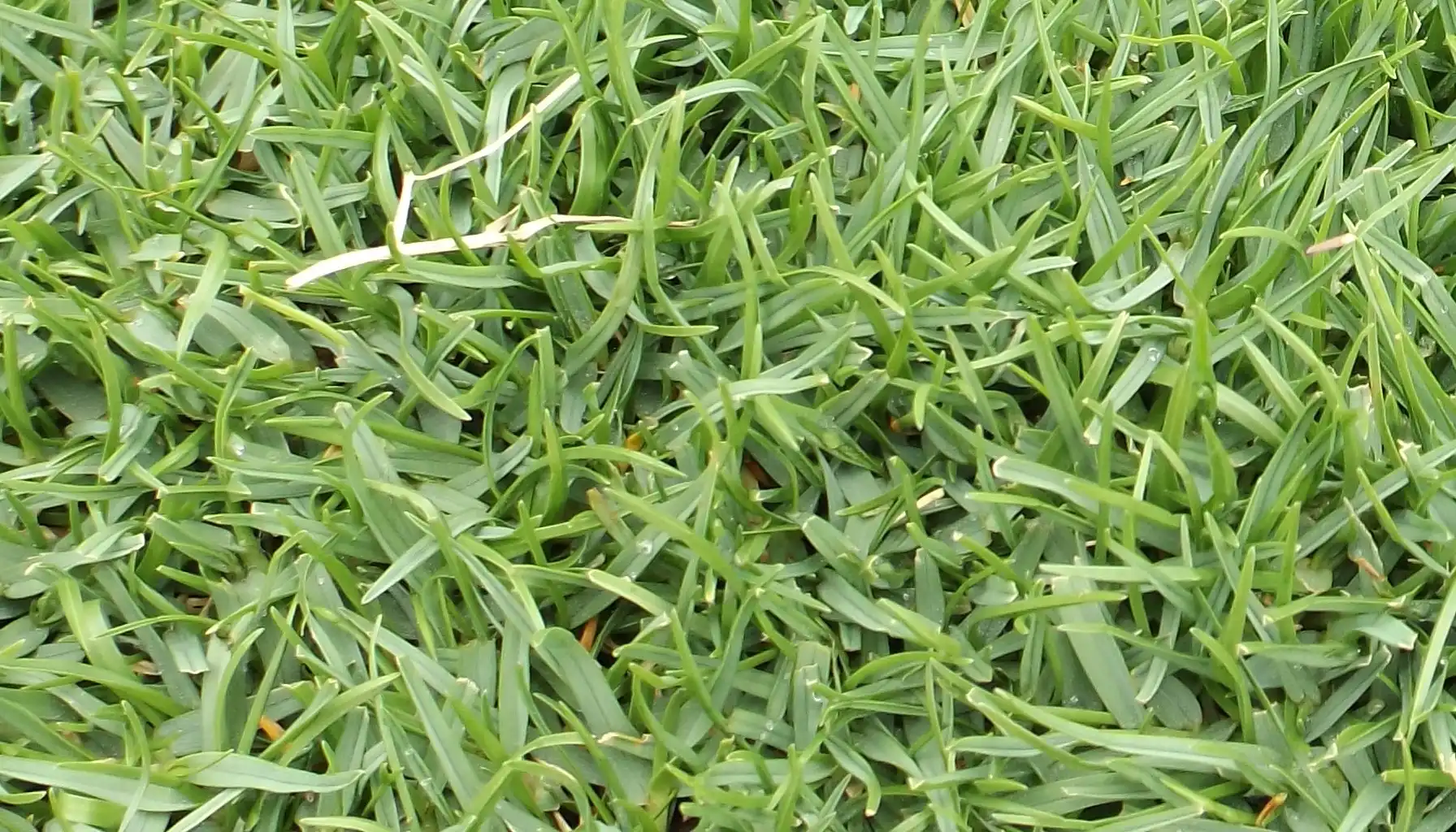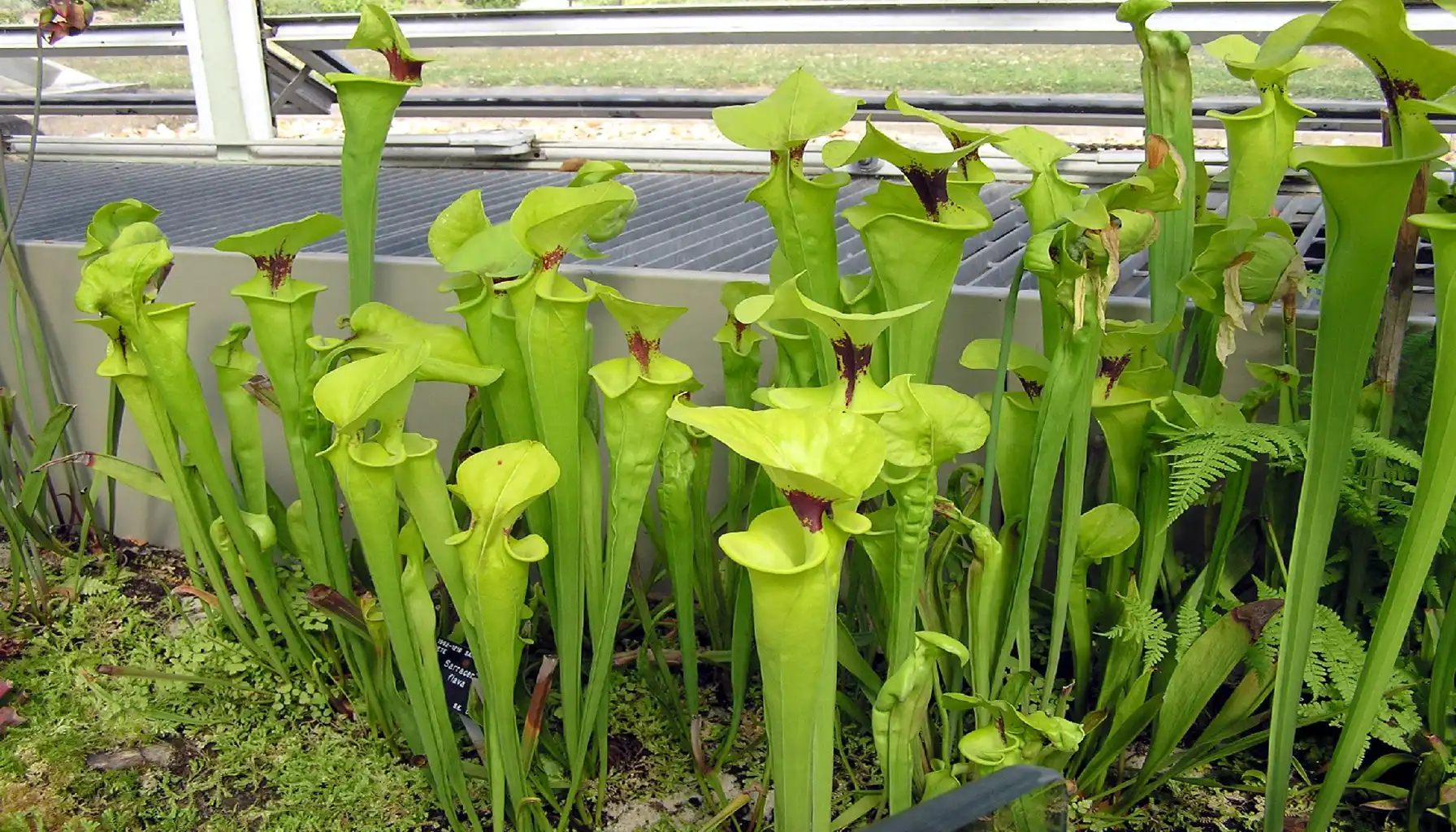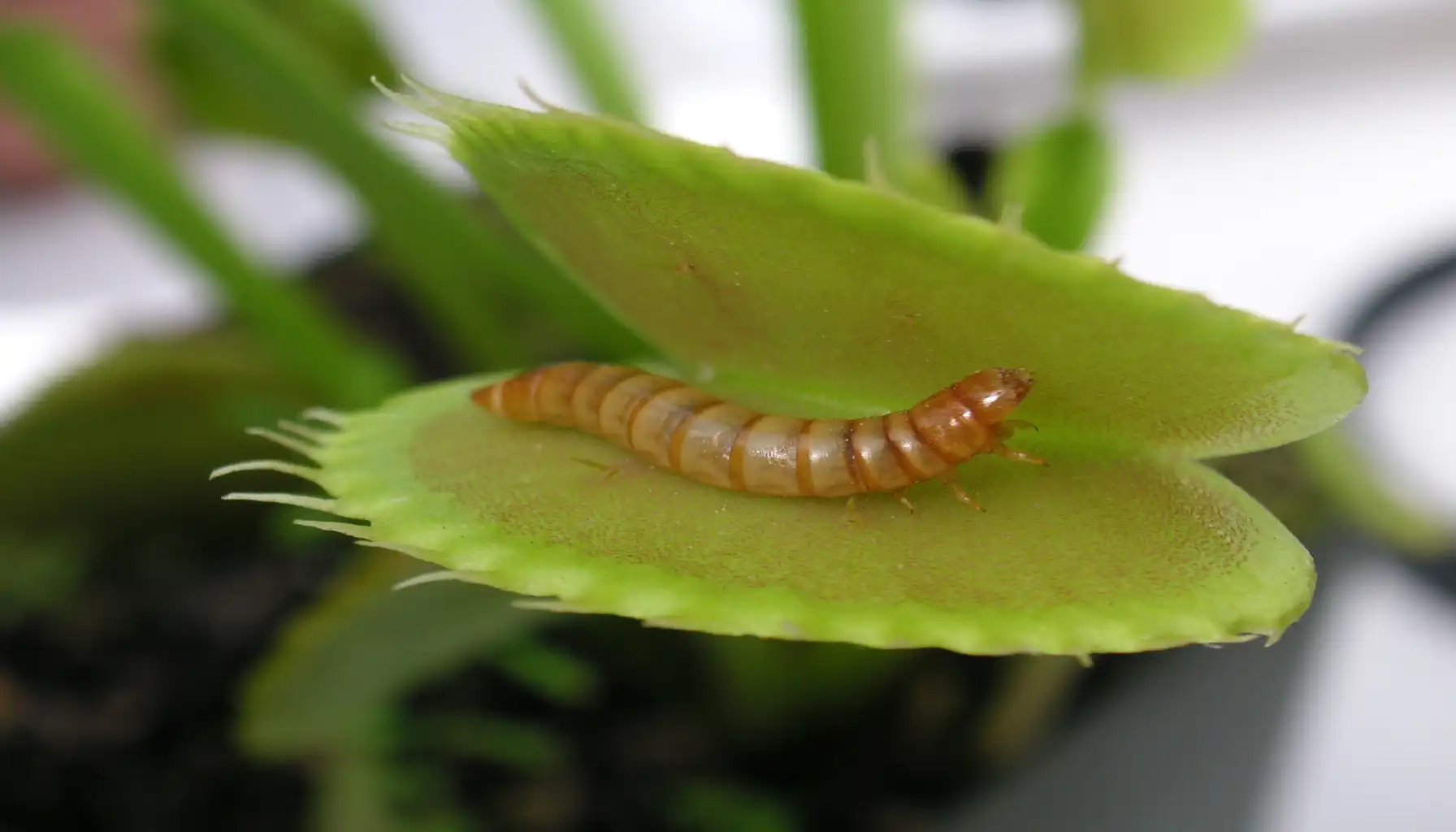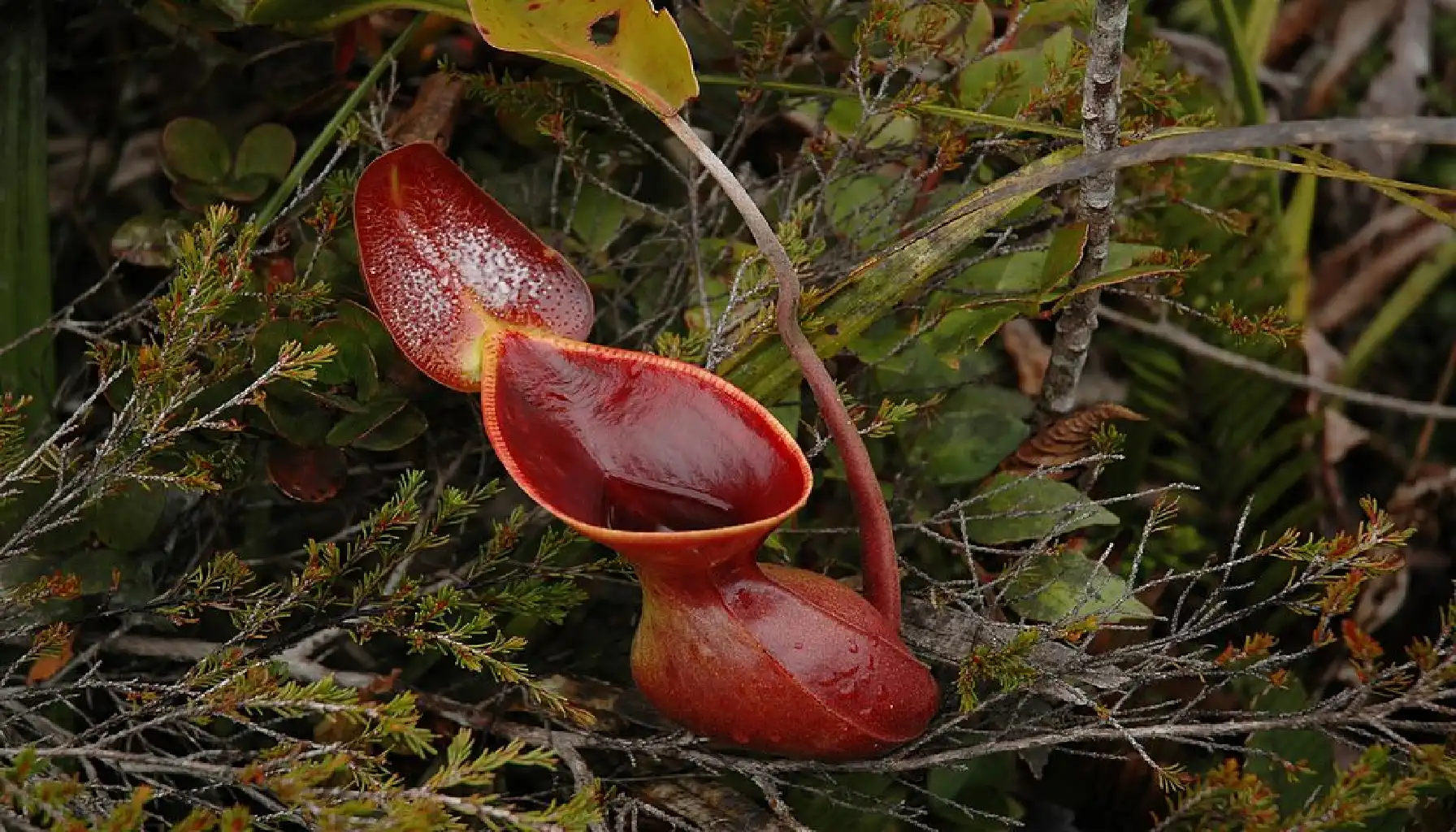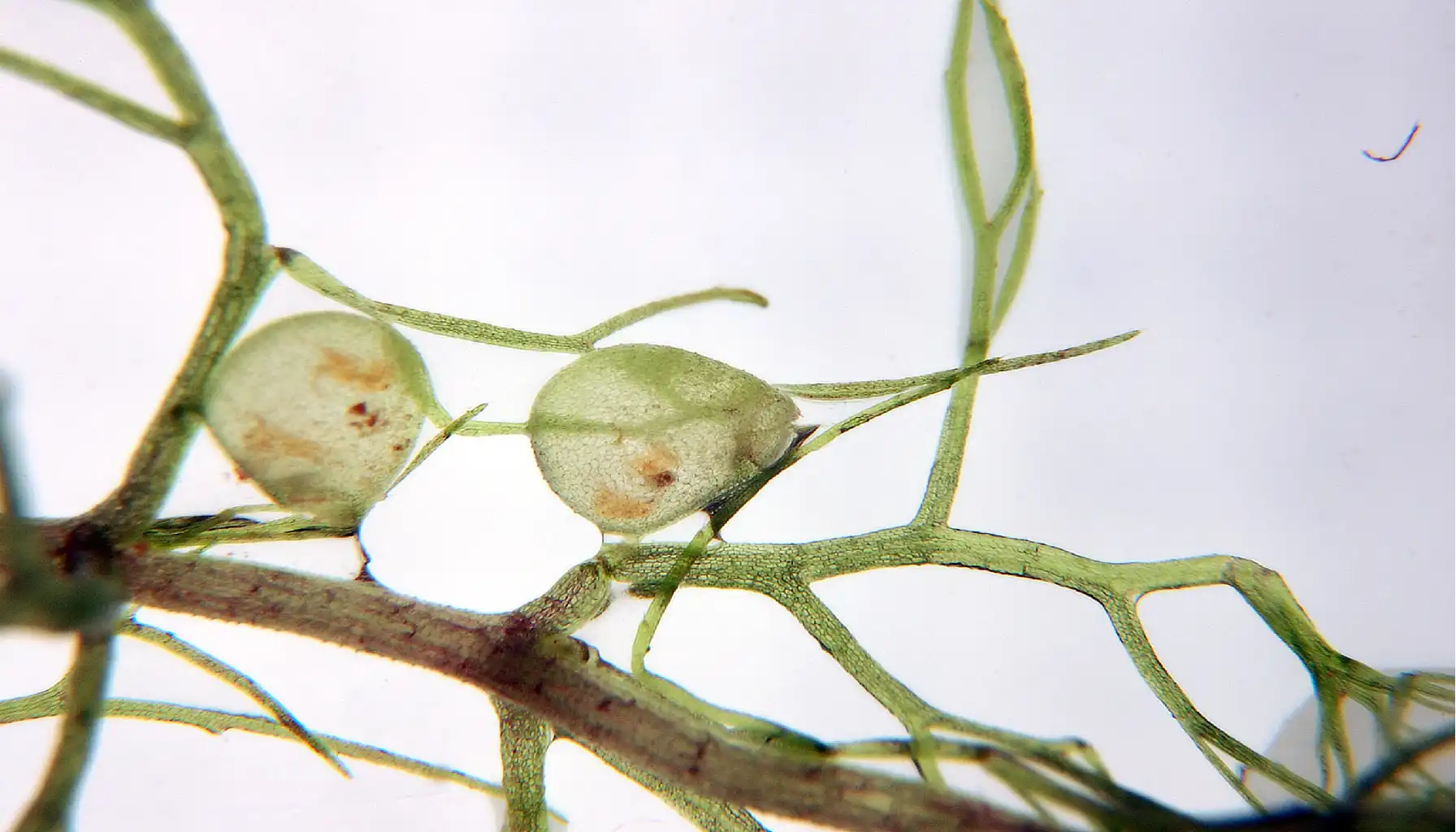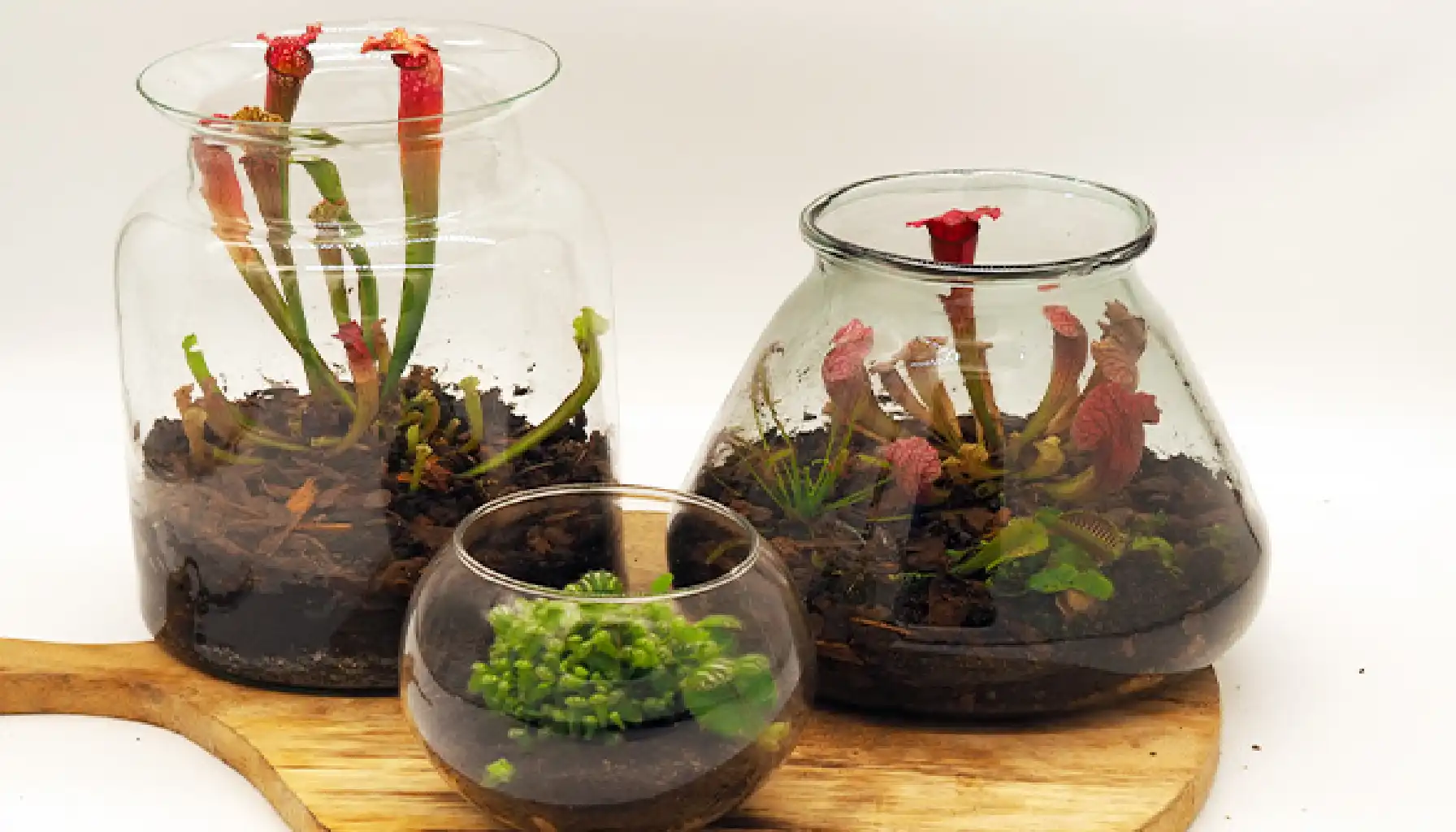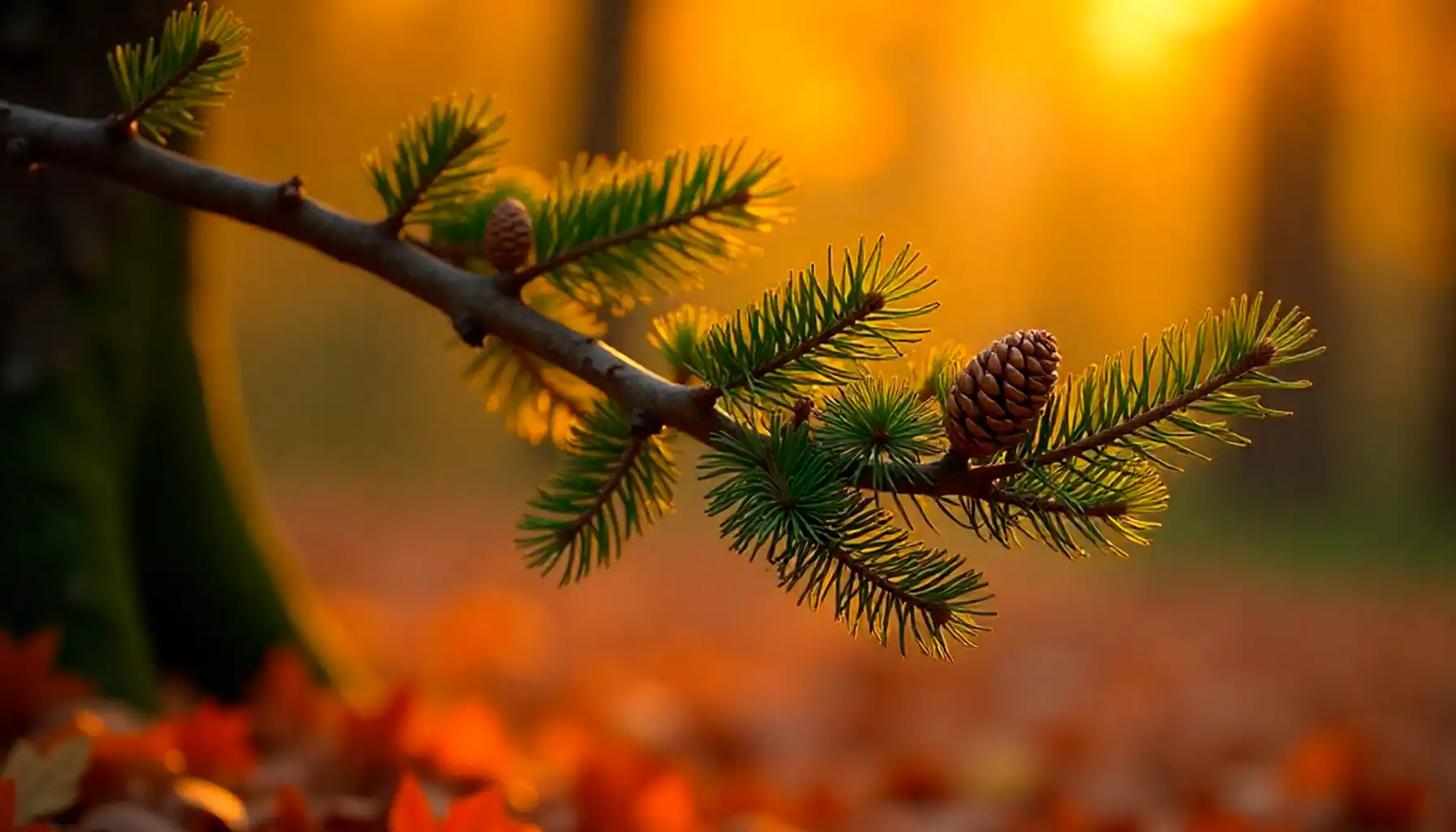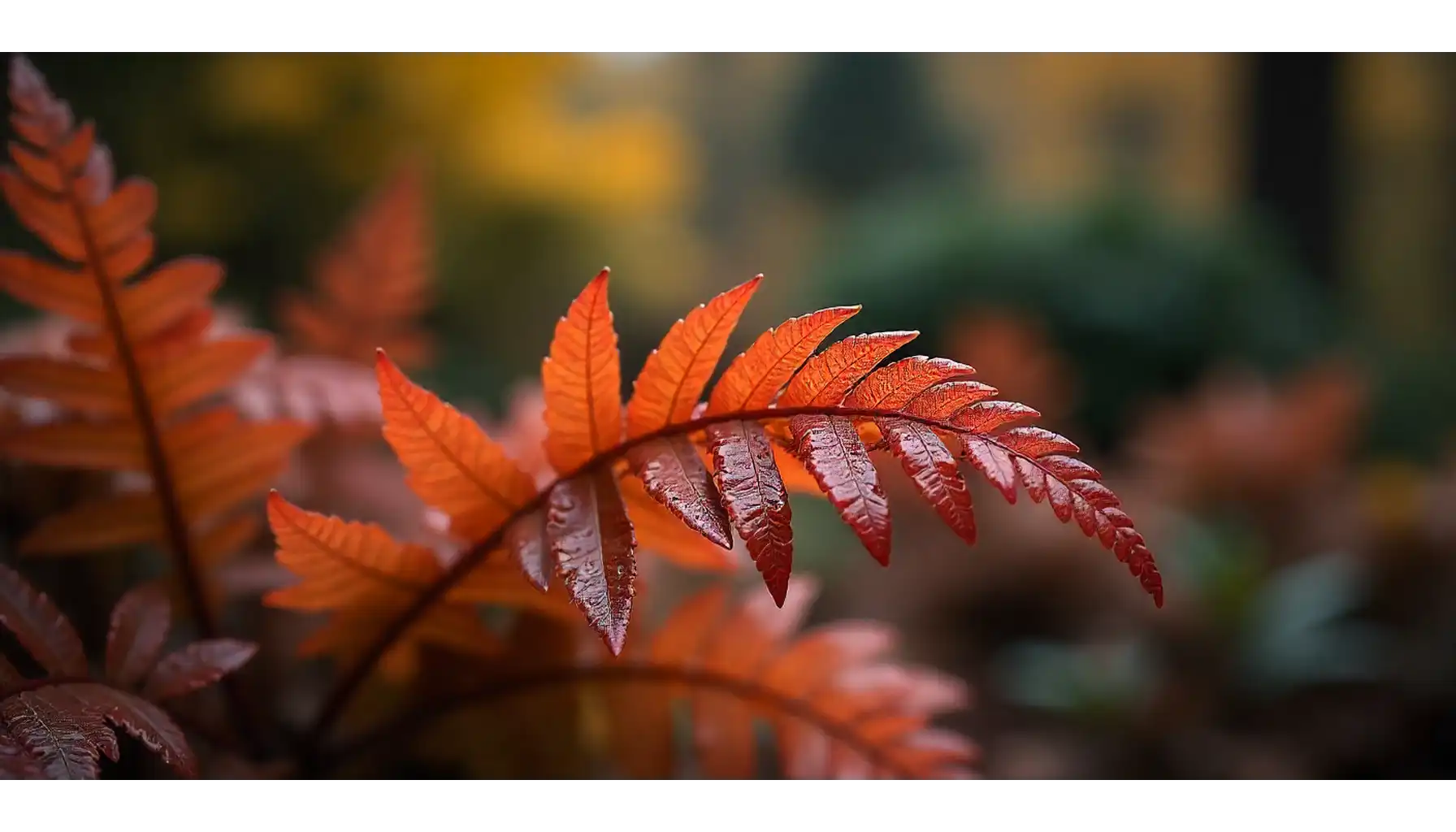These species look like aliens on our planet: their forms are so strange, and their colors so vivid. And if you ever see them in action, you know how fascinating they are. Of all of them, Venus Flytrap is probably the most widely known one, but did you know how many species and lookalikes exist? In this article, we will cover all the basics about these amazing species, teach how to distinguish even closely related ones via the plant app, and give you the carnivorous plant terrarium kit. Everything is set to prepare you for an alien-looking garden!
What Is a Carnivorous Plant?
These fantastic shapes and mechanisms aren’t just quirky—they’re brilliantly engineered for survival in environments most other botanical types avoid. Bogs, swamps, and other nutrient-poor ecosystems are where carnivorous plant varieties thrive, thanks to their ability to catch and digest living prey.
They’ve developed an arsenal of botanical weaponry:
Snap traps that clamp shut like a bear trap.
Sticky carnivorous plant tentacles and a honeydew carnivorous plant that glues insects in place.
A carnivorous pitcher plant filled with digestive fluids.
Suction bladders that vacuum up tiny creatures.
These mechanisms aren’t just clever—they’re evolutionary marvels that allow these creatures to extract nitrogen and other essential nutrients from their prey.
Fantastic Carnivorous Plant Types You Should Know About
Before diving into AI identification, it’s worth meeting carnivorous plant representative species. Each has a unique way of getting what it wants—food, light, and moisture—with a flair that ranges from elegant to downright eerie.
Venus Flytrap (Dionaea muscipula)
The queen of drama. With its quick-closing trap, triggered by sensitive hairs inside each “jaw,” it has captivated generations. It’s native only to a small region in North and South Carolina, but cultivated globally.
Sundew Carnivorous Plant (Drosera species)
These beautiful greens sparkle in the light thanks to their glistening mucilage-covered tentacles. Once an insect is trapped, the tentacles of a carnivorous sundew plant slowly curl inward to digest it—a mesmerizingly slow-motion attack.
Pitchers (Nepenthes, Sarracenia, Cephalotus)
Pitcher plant carnivorous create a passive death trap. Their deep, nectar-laced “pitchers” lure prey to the edge—then gravity does the rest. Inside, digestive enzymes break down the catch.
Butterwort Carnivorous Plant (Pinguicula species)
Deceptively pretty with rosettes of glossy, sticky leaves, these ones (also known as corkscrew plant carnivorous) act like flypaper. They’re ideal for indoor use due to their compact size and subtle appearance.
Bladderworts (Utricularia species)
These aquatic or semi-aquatic botanical types have miniature vacuum-like traps that suck in prey in milliseconds. You often won’t even notice the action—it’s that fast.
Cobra Lily (Darlingtonia californica)
Arguably one of the most alien-looking creatures on this list, it uses a combination of misleading openings and downward-pointing hairs to trick insects into entering its hollow chamber, never to return.
What Is the Biggest Carnivorous Plant?
In the race for size, the two largest carnivorous plants stand out:
Botanical Name | Max Pitcher Size | Habitat | Fun Fact |
Nepenthes rajah | 41 cm tall | Borneo (montane) | Can trap not just insects but rodents too. |
Nepenthes attenboroughii | 30 cm diameter | Philippines | Named after Sir David Attenborough. |
These giants are a far cry from the petite Venus flytrap but prove just how diverse this tropical floral world really is.
More fantastic nature: Learn about how to identify rare plants with your smartphone!
Carnivorous Plant Species Similar to Venus Flytrap: Detect Them via AI
To understand the challenge of identification, let’s look at some of the carnivorous plant names that are commonly mistaken for Venus flytraps, or that share similar mechanisms but belong to different families.
Botanical Name | Trap Type | Similarity to Venus Flytrap | Distinctive Features |
Venus Flytrap (Dionaea muscipula) | Snap Trap | — | Rapid closure, two-lobed leaves, teeth-like cilia |
Waterwheel (Aldrovanda vesiculosa) | Snap Trap | Very similar | Aquatic, whorled leaves, underwater traps |
Sundew (Drosera spp.) | Sticky/Flypaper | Related family | Glistening tentacles, slow curling, dew-like resin |
Bladderwort (Utricularia spp.) | Suction Trap | Distantly related | Tiny bladders, often aquatic, invisible action |
Pitchers (Nepenthes, Sarracenia) | Pitfall Trap | Distantly related | Passive liquid-filled traps, often tubular or cupped |
Cobra Lily (Darlingtonia californica) | Pitfall Trap | Distantly related | Snake-like hoods, complex internal pathways |
From this list, it’s clear that nature found multiple paths to the same goal: trapping prey. While some use speed, others rely on stealth, stickiness, or sheer architectural beauty. The challenge is that to an average grower, a Waterwheel might look just like a Venus flytrap in a water bowl, and a sundew’s tentacles might seem like “baby flytrap teeth.”
Misidentification doesn’t just lead to confusion—it can impact the health of your garden. Here’s why:
Incorrect care routines: Venus flytraps prefer slightly different carnivorous plant soil and feeding conditions than sundews or pitchers. Using the wrong setup of carnivorous plant terrarium layers could harm the general health.
Overwatering or underwatering: Aquatic species like bladderworts need full submersion, while others, like butterworts, need damp but not soaked conditions.
Improper lighting: Some tropical botanical species require full sun, others prefer partial shade. AI-based recognition helps ensure you match the plant with the right environment.
AI Plant Finder gives you the clarity needed to not only identify your green companion but also to care for it correctly based on species-specific needs.
Start a Carnivorous Plant Garden: Advice & Ideas
Whether you're aiming for a single exemplar on a windowsill or a full terrarium ecosystem, a bit of preparation goes a long way. Here's how to get started with the carnivorous plant bog terrarium the smart way:
Choose the Right Species
Begin with forgiving, hardy varieties that tolerate minor mistakes:
Venus flytrap – visually stunning, great for sunny windowsills.
Sundews – ideal for catching gnats, especially in kitchens.
Butterworts – perfect for compact spaces and low-maintenance environments.
Mimic Their Natural Habitat
These incredible floral types thrive in conditions most houseplants dislike:
Water: Use rainwater, distilled, or reverse osmosis water. Tap water contains minerals that harm their health.
Soil: Avoid standard potting mix. Instead, use a 1:1 mix of sphagnum peat moss and horticultural sand or perlite.
Light: Most species love at least 4–6 hours of direct sunlight. Alternatively, invest in a full-spectrum grow light.
Pro Advice: These fantastic species are fragile, so learn how to detect even mild wrongs with the help of technologies.
Control Humidity & Temperature
An open terrarium can help maintain the humidity levels many tropical carnivorous plants need, especially if your home is dry. Make sure the container allows airflow to prevent mold.
Feeding Rules
Let nature do the work. These creatures are built to catch prey on their own. But:
If indoors with little bug activity, offer a live insect every few weeks.
Never feed meat, cheese, or human food.
Don’t trigger traps for fun—it wastes the plant’s energy.
Carnivorous Plant List — Which Ones Are Suitable for Homes?
Not all tropical species are indoor-friendly. Some demand specialized setups, while others thrive with just a sunny spot and attention to water quality.
Botanical Name | Suitable for Homes? | Notes |
Venus Flytrap | ✅ Yes | Requires bright light and high humidity |
Sundews (Drosera) | ✅ Yes | Many varieties are very easy to grow indoors |
Butterworts (Pinguicula) | ✅ Yes | Compact and excellent at catching fungus gnats |
Pitchers | ✅ Some | Nepenthes prefer warmth; Sarracenia like cooler air |
Bladderworts (Utricularia) | ⚠️ Sometimes | Aquatic species need tanks or specific conditions |
Cobra Lily (Darlingtonia) | ❌ Challenging | Needs cool, flowing water—hard to replicate indoors |
AI Plant Finder provides a lot of scientifically-proven information about needs and conditions for each species it identifies, letting users know which plants are best suited for home environments and what setup they require.
Botany Tip: Searching for something easier to care about? Check this article and find species that will fit your needs and capabilities.
Carnivorous Plant Care Basics: Read This Before You Start a Terrarium
Before diving headfirst into planting, lock down these essential carnivorous plant terrarium ideas:
Water: Only use mineral-free water. Even one watering with tap can cause root burn.
Soil: Stick to acidic, nutrient-poor mixes like peat and sand. Never use fertilizers.
Light: More is better. A south-facing window or grow light ensures proper digestion and trap activity.
Humidity: Use a humidity tray, open terrarium, or humidifier as needed.
Feeding: No table scraps. Occasional bugs (once every 1–2 weeks) are enough.
Repotting: Only repot when necessary, usually every 1–2 years. Use fresh, clean specified mix soil.
With AI Plant Finder, you'll get customized care plans based on the exact plant species, its current size, and your environment. You’ll even get reminders for watering, light adjustments, and seasonal dormancy if applicable.
The right ID app makes identifying and caring for a Venus flytrap simple. What is more important, you’ll be able to spot unusual species not only in your garden, but in their natural habitat as well. Learn faster, avoid mistakes, and build a healthier, more captivating collection of flytraps, pitchers, and others outdoors and indoors.
Related AI Plant Finder Blog Posts
